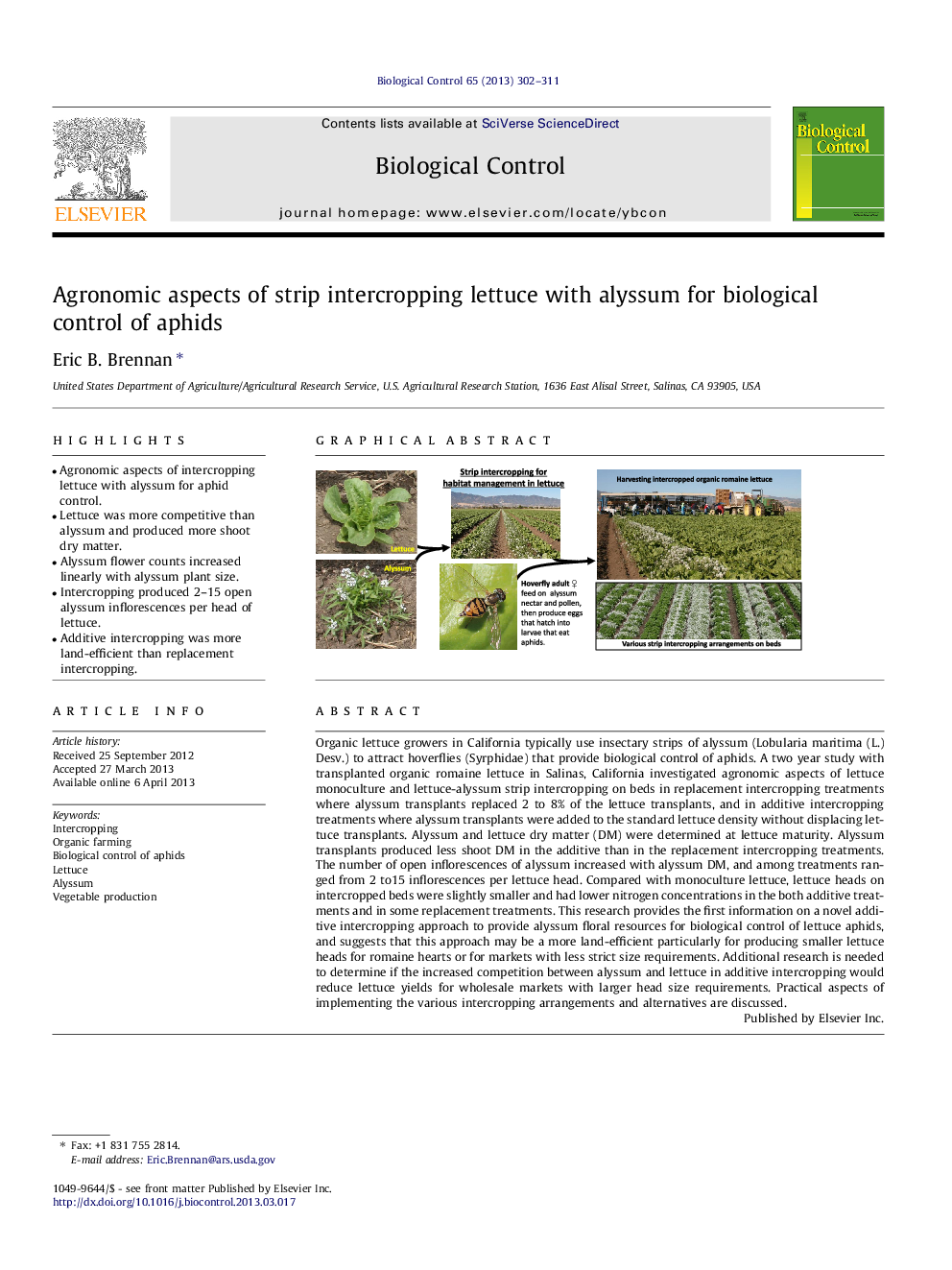| Article ID | Journal | Published Year | Pages | File Type |
|---|---|---|---|---|
| 4504026 | Biological Control | 2013 | 10 Pages |
•Agronomic aspects of intercropping lettuce with alyssum for aphid control.•Lettuce was more competitive than alyssum and produced more shoot dry matter.•Alyssum flower counts increased linearly with alyssum plant size.•Intercropping produced 2–15 open alyssum inflorescences per head of lettuce.•Additive intercropping was more land-efficient than replacement intercropping.
Organic lettuce growers in California typically use insectary strips of alyssum (Lobularia maritima (L.) Desv.) to attract hoverflies (Syrphidae) that provide biological control of aphids. A two year study with transplanted organic romaine lettuce in Salinas, California investigated agronomic aspects of lettuce monoculture and lettuce-alyssum strip intercropping on beds in replacement intercropping treatments where alyssum transplants replaced 2 to 8% of the lettuce transplants, and in additive intercropping treatments where alyssum transplants were added to the standard lettuce density without displacing lettuce transplants. Alyssum and lettuce dry matter (DM) were determined at lettuce maturity. Alyssum transplants produced less shoot DM in the additive than in the replacement intercropping treatments. The number of open inflorescences of alyssum increased with alyssum DM, and among treatments ranged from 2 to15 inflorescences per lettuce head. Compared with monoculture lettuce, lettuce heads on intercropped beds were slightly smaller and had lower nitrogen concentrations in the both additive treatments and in some replacement treatments. This research provides the first information on a novel additive intercropping approach to provide alyssum floral resources for biological control of lettuce aphids, and suggests that this approach may be a more land-efficient particularly for producing smaller lettuce heads for romaine hearts or for markets with less strict size requirements. Additional research is needed to determine if the increased competition between alyssum and lettuce in additive intercropping would reduce lettuce yields for wholesale markets with larger head size requirements. Practical aspects of implementing the various intercropping arrangements and alternatives are discussed.
Graphical abstractFigure optionsDownload full-size imageDownload as PowerPoint slide
